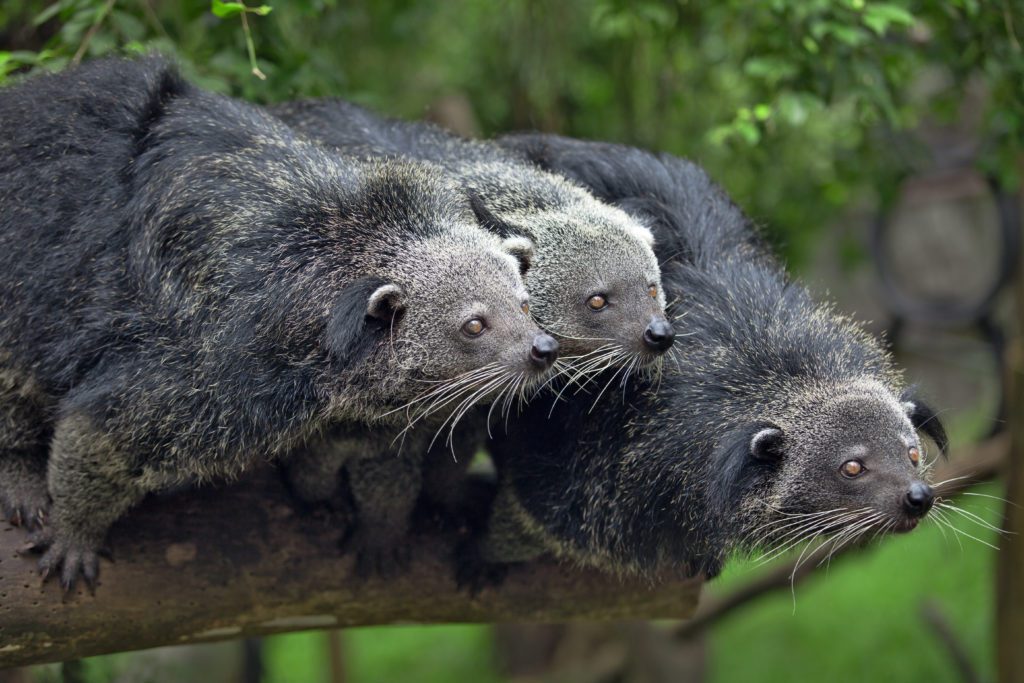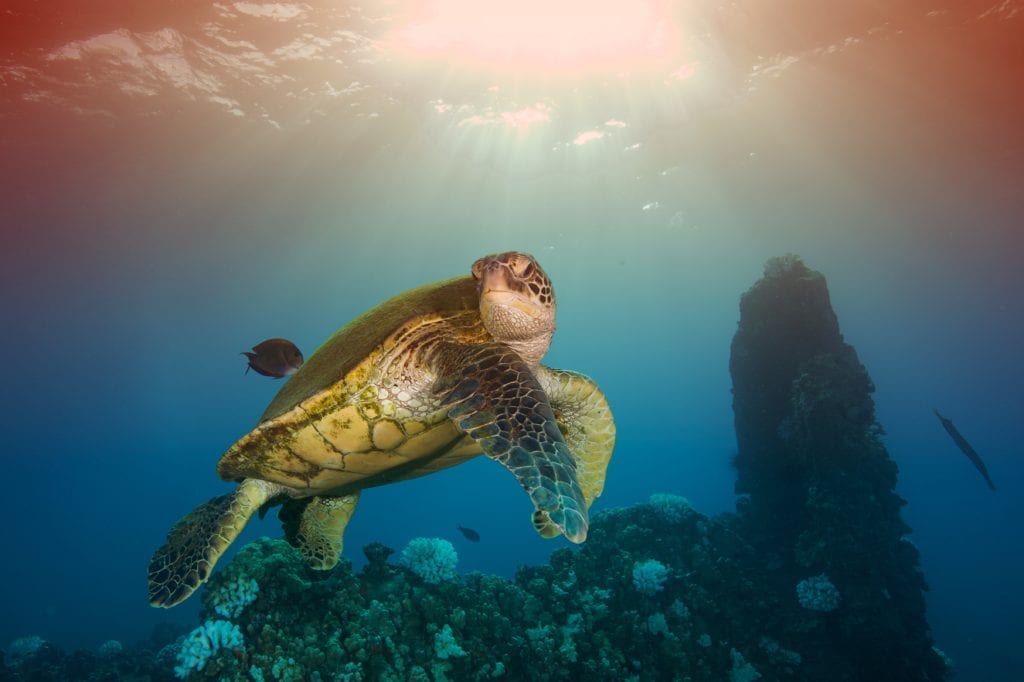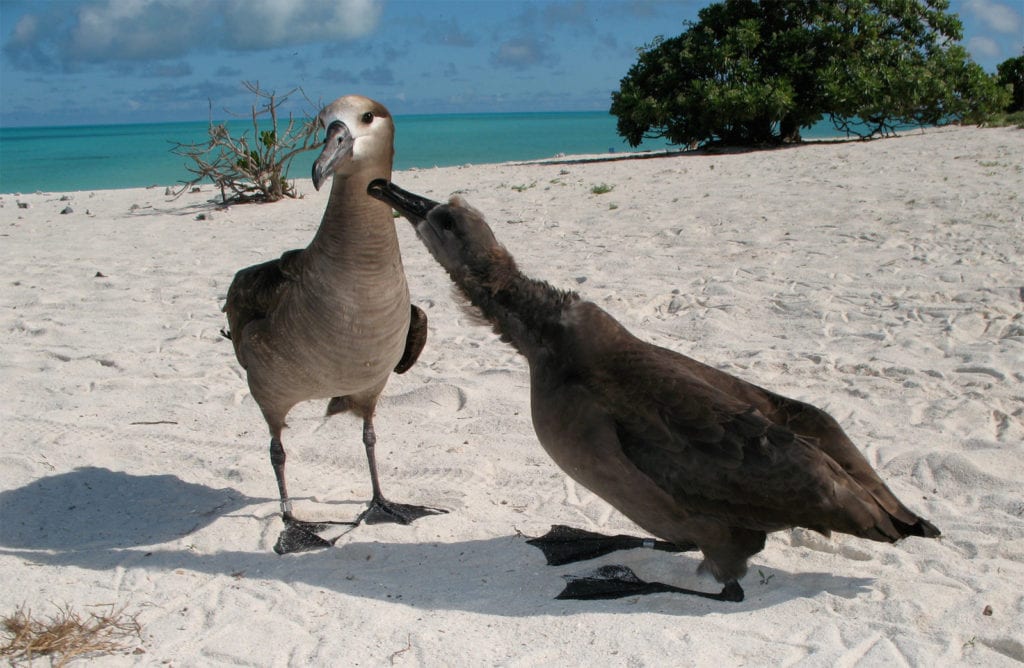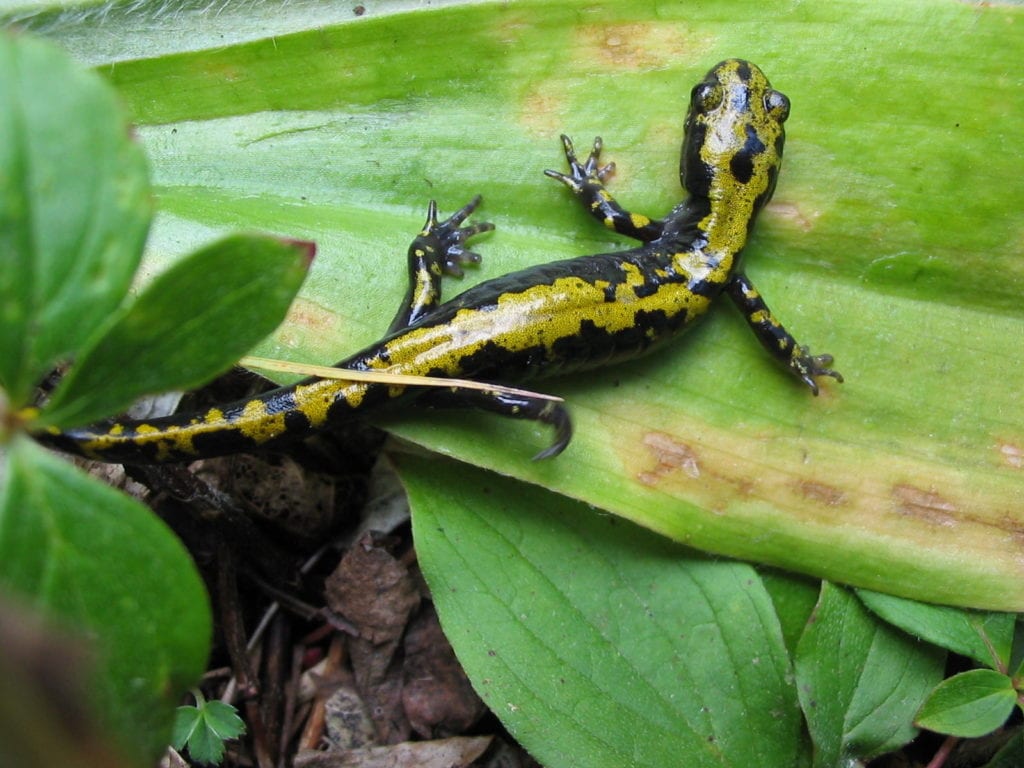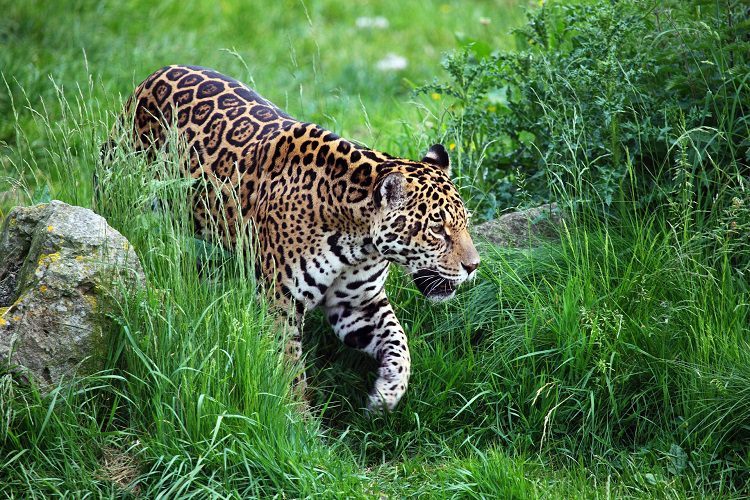With support from the Wild Genomes program, researchers at the Wildlife Rescue Centre Jogja in Indonesia have developed genetic markers for binturongs that will allow recaptured animals to be returned to their native habitats (and their native gene pools). Without this new capability, rescued animals must live out their lives in captivity, not contributing to the restoration of their species.

The Binturong (Arctictis binturong) is a rare carnivore with padded paws, long claws, and a prehensile tail. They live in rainforests across southeast Asia, where they provide an important ecological role: digesting and depositing seeds from the fruits they eat.
But for veterinarian Irhamna Putri Rahmawati (“Irna”), Conservation Program Supervisor at the Wildlife Rescue Centre Jogja in Central Java, Indonesia, binturongs are more than just rainforest gardeners. They are frequent clients at her rescue center for orphaned, injured, and illegally traded wildlife.
Despite their protected status in Indonesia, binturongs are commonly hunted for meat and the pet trade. They are also harvested for their bile, which is believed to transfer supernatural powers. “Binturongs are one of the most frequent species found in confiscations,” explains Irna, who has spent her career helping rehabilitate rescued wildlife.
Unlike many species, however, when binturongs are confiscated, they are transferred to either zoos or rescue centers – not released back to the wild. This is mainly because wildlife managers don’t know where to release rescued animals.
“The binturongs that come to us do not have clear information about their geographic origin,” Irna explains, “Which makes it hard to proceed with the reintroduction process.”
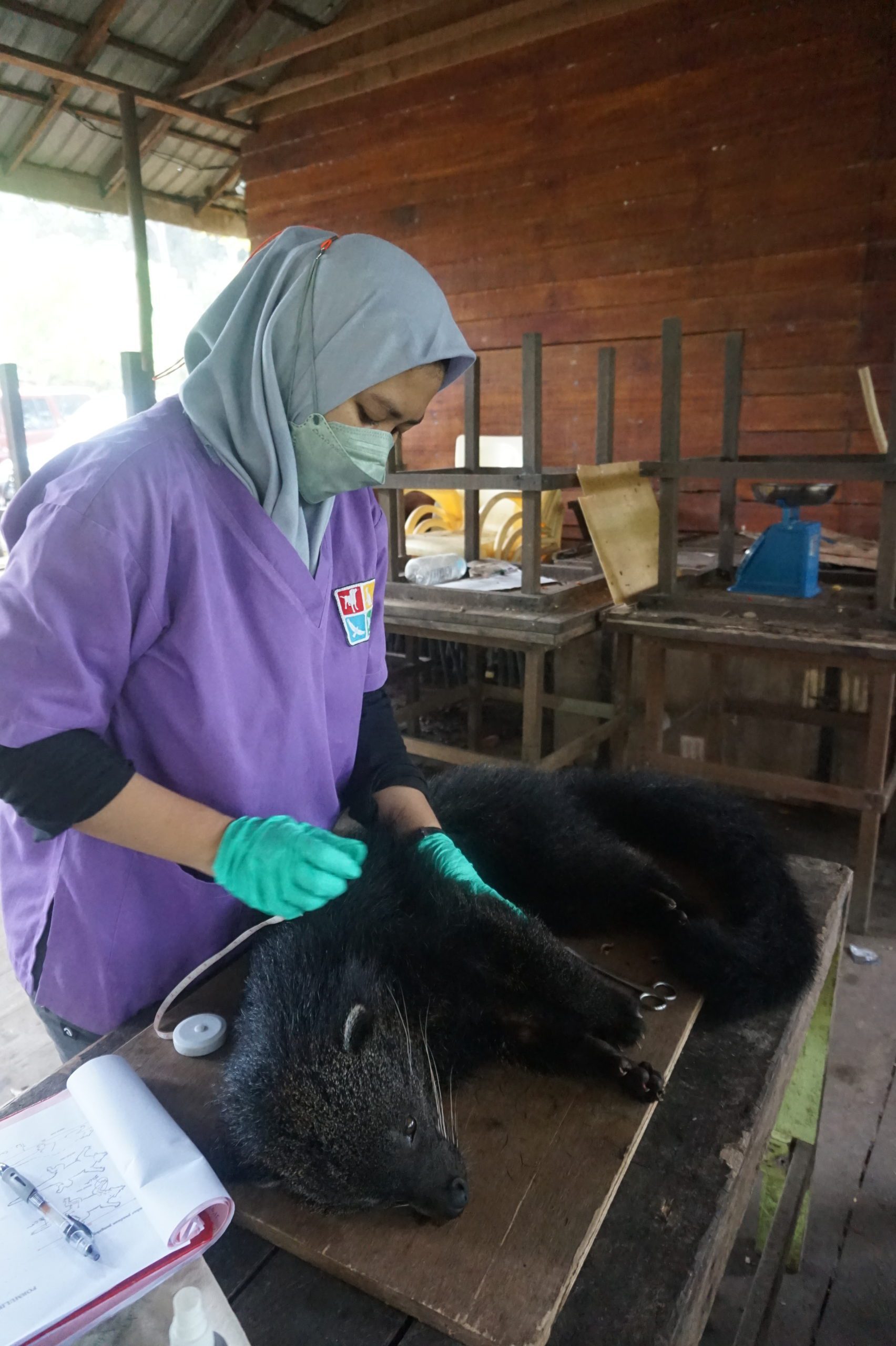
Veterinarian Irhamna Putri Rahmawati (“Irna”) assesses the physical health of a binturong at a zoo in West Kalimantan, Indonesia. Credit: Wildlife Rescue Centre Jogja
Without a way to tell where binturongs come from, rescued animals cannot be returned to the wild.
Photo: Captive binturongs await a snack. Credit: Freepik
Genomics present a new path forward
Scientists have identified at least nine subspecies of binturongs across southeast Asia, with four found in Indonesia. Each subspecies is practically identical in appearance, but their genomes may contain key differences between individuals from different populations.
Just as a home DNA test can tell you where your ancestors hailed from, the same genomic technology can be used with wildlife to uncover the genetic patterns linked to their geographic origins.
To try this approach with rescued binturongs, Irna and two colleagues—Andreas Bandang Hardian at Brawijaya University and Rini Widayanti at Gadjah Mada University—applied to the Wild Genomes program at Revive & Restore. Wild Genomes funds the development of genomic tools for applied conservation projects globally.
From 2020-2022, Irna and colleagues sampled 47 binturongs across three Indonesian islands: Java, Sumatra, and Kalimantan. They compared their data to genetic samples from binturongs across mainland Asia, including Myanmar, the Philippines, Laos, and India.
Their goal: to study the genetic differences between binturong populations and find genetic markers (i.e. short DNA sequences) that reflect where an individual is from. This genetic insight can improve the success of both reintroduction and captive breeding programs.
As Irna explains, “Binturongs are present in most Indonesian rescue centers. This study was an essential step in designing an appropriate conservation plan with the goal to release the rehabilitated binturongs back to their natural habitat.”
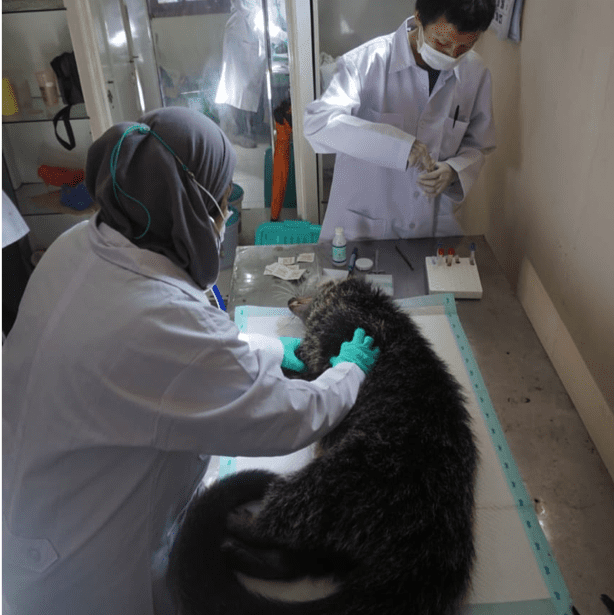
Irna collects a blood sample from a binturong at a breeding facility in Semarang, Central Java, Indonesia. Credit: Wildlife Rescue Centre Jogja
Genetic markers can help determine where a binturong is from. This insight can improve the success of reintroduction and captive breeding programs.
Photo: Captive binturong on a branch. Credit: Freepik
“Ultimately, the results of this study can provide the gold standard for binturong subspecies identification and for helping design an appropriate binturong conservation plan in Indonesia. We even plan to establish the binturong rehabilitation program to further boost the conservation effort of this neglected yet commonly traded species.”
Irhamna Putri Rahmawati (“Irna”)
Conservation Program Supervisor at the Wildlife Rescue Centre Jogja
This project is supported by the Ministry of Environment and Forestry of Indonesia, as well as Revive & Restore. Special thanks to the partners that support Wild Genomes:



Keep up with Wild Genomes!
Join our mailing list for bi-annual updates from Revive & Restore, including new calls for Wild Genomes proposals.



